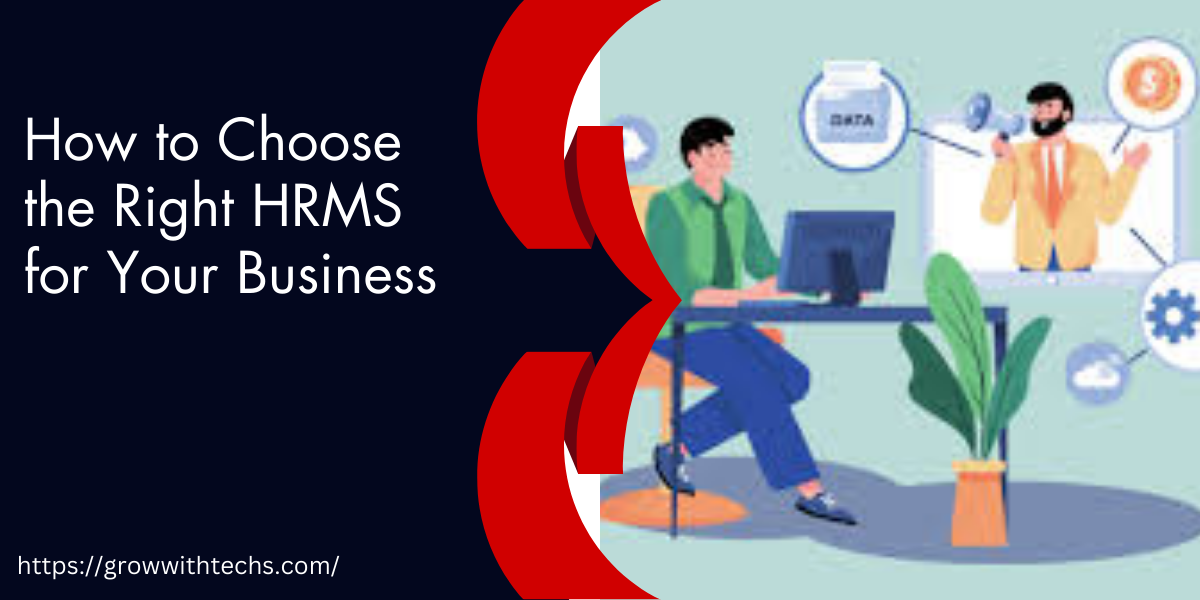Managing human resources (HR) is important for any business. A Human Resource Management System (HRMS) can make this easier. But with so many options, picking the right one can be hard.
A study by HR Tech Outlook found that companies using the right HRMS saw a 20% boost in efficiency and a 15% drop in employee turnover. This shows how important it is to choose the right system.
This guide will help you pick the best HRMS for your business. Let’s get started!
Understand Your Business Needs
First, think about what your business needs. Do you need help with payroll, hiring, or tracking employee performance? Make a list of your needs.
For example, a small business might not need advanced features. But a big company might. Knowing your needs will help you pick the right HRMS.
Check Your Current HR Processes
Look at how your HR team works now. Find out what’s working and what’s not. This will help you see what features your HRMS should have.
For example, if payroll takes too long, you might need a system with strong payroll tools. This step helps you find the right fit.
Also read : HRMS Globex: Optimizing Your Human Resource Management.
Define Your Goals
What do you want the HRMS to do? Do you want to save time, improve employee engagement, or stay compliant with laws? Write down your goals.
Clear goals will help you choose a system that meets your needs. They also make it easier to measure success later.
Look at Core HR Features
Every HRMS has basic features like employee data management and payroll. Make sure the system you choose has the features you need.
For example, if you need help with attendance tracking, pick a system that does that well. Don’t pay for features you won’t use.
Think About Scalability
Your business might grow in the future. Choose an HRMS that can grow with you. This means it should handle more employees and data as your business expands.
A scalable system saves you from switching later. It’s a smart choice for long-term success.
Check Integration Options
Your HRMS should work well with other tools you use. For example, it should connect with your accounting or recruitment software.
Good integration makes your work easier. It also reduces errors and saves time.
Choose a User-Friendly System
Your team shouldn’t need weeks of training to use the HRMS. Pick a system with a simple interface and mobile access.
A user-friendly system makes life easier for everyone. It also helps your team adopt it faster.
Prioritize Security
HR data is sensitive. Make sure the HRMS has strong security features like encryption and access controls. It should also follow laws like GDPR or HIPAA.
Good security protects your data and keeps your business safe from breaches.
Look for Customization
Every business is different. Choose an HRMS that lets you customize it to fit your needs. This could include your workflows, policies, or even branding.
Customization makes the system work better for you. It also helps you stay unique.
Research the Vendor
Before choosing an HRMS, research the vendor. Read reviews and testimonials from other businesses. This will help you see if the system works well.
A good vendor has a strong track record and happy customers. They also offer great support.
Check Customer Support
Even the best systems can have issues. Make sure the vendor offers good customer support. This could be through phone, email, or chat.
Good support helps you solve problems quickly. It also makes the system easier to use.
Consider the Cost
HRMS plans come at different prices. Think about your budget and compare the costs of each plan. Don’t just pick the cheapest option.
Look for a plan that offers good value for money. It should have the features you need without extra costs.
Think About ROI
An HRMS is an investment. Think about how it will help your business. Will it save time, reduce errors, or improve productivity?
A good HRMS should pay for itself over time. It should also help your business grow.
Plan for Implementation
Ask the vendor about the implementation timeline. A good system should be up and running quickly without disrupting your work.
Also, check if they offer training for your team. Good training helps everyone use the system better.
Gather Feedback
After implementing the HRMS, ask your team for feedback. Find out what’s working and what’s not. This will help you improve the system.
Feedback also helps you make the most of your HRMS. It ensures the system meets your needs.
Choose a Vendor That Improves
Technology changes fast. Pick a vendor that updates the HRMS regularly. They should add new features and fix any issues.
A system that improves over time stays useful. It also keeps your business ahead of the competition.
Conclusion
Choosing the right HRMS is a big decision. It can make your HR tasks easier and help your business grow. Follow these steps to find the best system for your needs.
Remember, the right HRMS is more than just software. It’s a tool that helps your business succeed.

